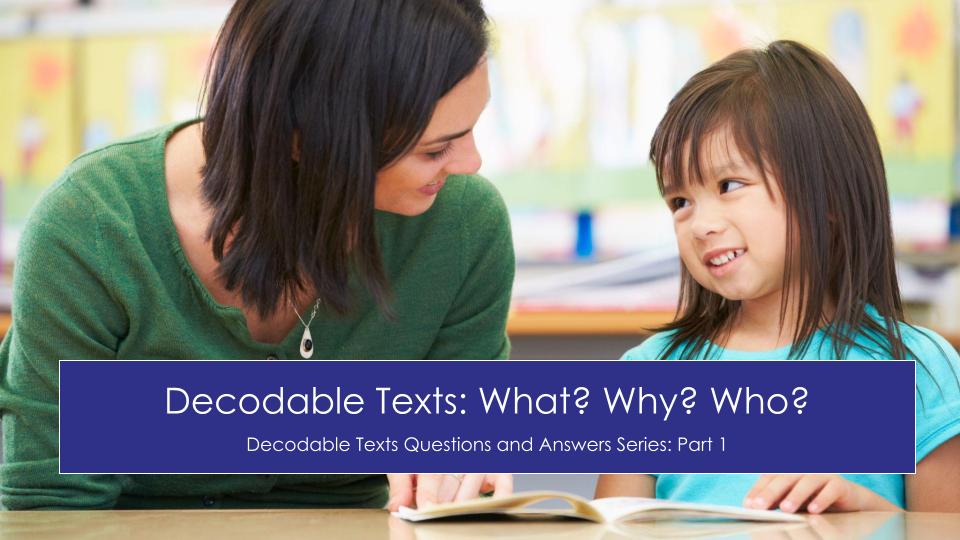Decodable texts!
Conversations about them seem to be popping up everywhere these days!
If we’re honest, we have to admit that we both started this journey with a whole bunch of baggage that left us feeling more than a little bit leery of decodable texts. But more and more, we’ve come to embrace decodable texts as having a specific and important role for beginning readers.
And if you’re like many of the educators we talk to these days, you probably have some questions about decodable texts.
Maybe you have questions like these on your mind.
- Who really needs decodable texts, anyway?
- What is a decodable text, really?
- How many decodable texts do I need?
- How do I know if a text provides the right mix of words for my students?
- What about meaning-making in decodable texts?
- But aren’t decodable texts boring?
- What are some affordable (or better yet free) ways to get started exploring decodable texts?
- What are the most helpful ways to incorporate decodable texts into your early literacy instruction?
- Should decodable texts replace leveled texts in small-group instruction?
Based on questions like these and many more, we’ve decided to offer a short series of posts focused exclusively on decodable texts. We start today by simply defining decodable texts and offering some suggestions about the types of decodable texts you’ll want access to.
Who Really Needs Decodable Texts Anyway?
Of course, eventually, we want children to be able to navigate a complicated super highway of reading, confidently steering through any type of word that comes their way. But as is true for beginning drivers, providing the protection of quieter back roads where they can safely develop skills and confidence – before taking them out into more traffic – can make all the difference.
But as helpful as they can be, readers do NOT need decodable texts forever or at every stage of development. They are a scaffold that we want to help children outgrow as their ability to decode more and more types of words begins to open up more and more text possibilities for them.
What is a Decodable Text, Really?
Since all text is decodable, you might wonder what exactly a text has to do to earn the label “decodable” in the first place. Decodable texts differ from other texts in two primary ways.
First, decodable texts have been written to support beginning readers with the mastery of specific phonics skills. Secondly, the decodability of a specific text is always relative to the decoding development of a specific child or group of children at a specific moment in time. In other words, what serves as a decodable text for one student, isn’t necessarily decodable for another. Decodability depends on the match, or alignment, between the demands of the text and the specific decoding skills the reader brings to it.

In fact, because their alignment to explicit phonics instruction is so important for decodable texts, we refer to these texts as aligned texts in our book Shifting the Balance (Shift 6) and in our online course by the same name.
We are so glad you have joined us on this journey as we explore some common questions about decodable texts. We hope that the answers to these first two questions have piqued your interest and given you some insight into what sets a particular text apart as decodable.
In the next post in this series, we will pick up where we are leaving off today as we consider how many decodable texts you might need to support beginning readers.
Binge our entire 6-part blog series about decodable texts!
Decodable Texts Q&A (Part 1): What? Why? Who?
Decodable Texts Q&A (Part 2): How Many is Enough?
Decodable Texts Q&A (Part 3): What to Look For? The WORDS.
Decodable Texts Q&A (Part 4): What Else to Look For – The MEANING.
Decodable Texts Q&A (Part 5): What About FREE Decodables?
Decodable Texts Q&A (Part 6): More Ideas for Getting Started!
-

Jan Burkins and Kari Yates are authors, speakers, and consultants, who are dedicated to helping teachers around the world translate reading science into simple instructional moves that help teachers make learning to read easier for their students while still centering meaning-making, engagement, and joy.
Recent Posts


I love this ‘aligned texts’ are Decodable texts. Thanks for doing this important work! As a literacy coach, I have spent the better part of this year, providing PD around the benefits of using sound walls and Decodable texts to shore up K-1 kids PA/Phonics needs. These scaffolds are making a huge difference for our kids. 😊
Our building is working within a system of our district to find some quality decodable texts for our youngest readers. Can you share any sites or resources for us to try?
Stayed tuned! That’s the focus of Parts 5 and 6 in this series.
Thank you! This explanation really helped. 🙂
So glad to hear it!